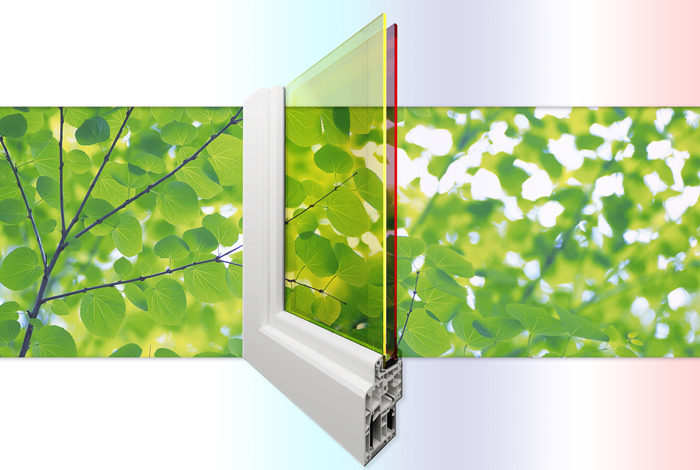Scientists working with quantum dot technology have developed a two-pane solar glass, which can generate efficiency, as well as provide insulation and shading. The glass incorporates two different quantum dot layers, tuned to absorb different parts of the solar light spectrum.
This tuning, known as ‘solar-spectrum splitting’, allows higher and lower energy photons to be processed separately. The glass comprises a front pane with a layer of highly emissive, manganese doped quantum dots deposited onto it, and a second pane of glass comprising a copper-indium-selenide layer.
The front layer absorbs blue and ultraviolet portions of the solar spectrum, leaving the rest to fall on to the CIS layer below.
The use of manganese ions in the front layer is also a key innovation – these quantum dots act as highly emissive impurities, emitting light at wavelengths below the quantum dot absorption.
This re-emitted light is then guided by total internal reflection into solar cells incorporated into the window frame. According to the researchers, this trick allows for almost complete elimination of losses due to self-absorption.
“Because of the strong performance we can achieve with low-cost, solution processable materials, these double pane windows and solar concentrators offer a new way to bring down the cost of solar electricity,” says lead researcher Victor Klimov. “The approach complements exisiting PV technology.”
This content is protected by copyright and may not be reused. If you want to cooperate with us and would like to reuse some of our content, please contact: editors@pv-magazine.com.




1 comment
By submitting this form you agree to pv magazine using your data for the purposes of publishing your comment.
Your personal data will only be disclosed or otherwise transmitted to third parties for the purposes of spam filtering or if this is necessary for technical maintenance of the website. Any other transfer to third parties will not take place unless this is justified on the basis of applicable data protection regulations or if pv magazine is legally obliged to do so.
You may revoke this consent at any time with effect for the future, in which case your personal data will be deleted immediately. Otherwise, your data will be deleted if pv magazine has processed your request or the purpose of data storage is fulfilled.
Further information on data privacy can be found in our Data Protection Policy.